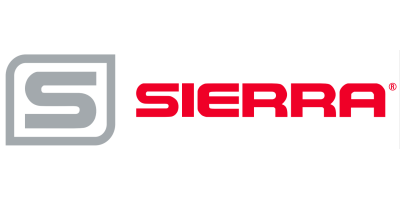

- Home
- Companies
- Sierra Instruments, Inc.
- Articles
- Increase biogas production, aeration ...
Increase biogas production, aeration basin efficiency with the right flow meter
In our competitive economic climate, many plant operators have a mandate to tune their plant’s performance by efficiently using biogas in cogeneration processes and increasing aeration basin efficiency, both of which can save thousands of dollars in the critical secondary stages of wastewater treatment. In many cases, these facilities are retrofitting with new flow measurement instrumentation to run more highly efficient, cost-effective, clean facilities.
In both applications, choosing the right flow meter technology to give the most precise flow readings is critical to a healthy and efficient wastewater treatment facility.
A guide for wastewater treatment plants
Direct mass flow meter gives precise measurement at lower cost – In biogas and aeration applications, the critical data for operators is the gas mass flow rate in SCFM or pounds per hour, not the volumetric flow rate. Since a volumetric flow rate changes with variations in temperature and pressure, a volumetric flow meter, such as a typical orifice plate, must be compensated with additional temperature and pressure sensors and must use a flow computer to compute mass flow. Direct mass flow meters give precise mass flow measurement data with one instrument without extra instrumentation and maintenance costs.
Clean solution for measuring digester gas – Digester gas in particular is often very dirty, and can easily gum up a turbine meter or plug the holes in a pitot tube, increasing maintenance costs during the lifetime of the product. Select a mass flow meter with no moving parts and a removable probe for easy cleaning to decrease your cost of ownership and maintenance costs. A flow meter with no moving parts is unlikely to be gummed up with the dirt in the digester gas.
Fast, efficient installation – Most in-line meters require cutting out a section of the pipe. In addition, they can require long straight runs to establish a fully developed flow profile for maximum accuracy. An insertion meter or an in-line meter with flow conditioning offers an economical solution to maintain high accuracy in heavily constrained piping environments, where long-straight pipe runs simply don’t exist.
Flexibility for changing WWTP conditions – A WWTP is a dynamic system in which flow rates change and temperatures and pressures vary. The composition of digester gas changes during the course of production. Even the sizes of the pipes can change as the plant is scaled up to meet increasing demand. The ideal flow meter will have a large turndown (100:1), be multivariable (able to measure flow, temperature and pressure) and have the ability to change gases or pipe sizes in the field. A solution with this field flexibility saves money in instrumentation costs because one meter can measure all process parameters and recalibration costs with the ability to get accurate multiple gas readings without sending the meter to the factory for recalibration.
Accurate and affordable – The more accurate the mass flow measurement, the better production results, leading to higher yields in biogas production and increased efficiency in aeration. In a market where high accuracy often comes at a high price (think coriolis technology), the best solution offers high accuracy (
Selecting the ideal WWTP flow meter
Immersible thermal mass flow meters offer an ideal solution to optimize biogas production and run efficient aeration. Thermal dispersion technology uses the physics of heat transfer to measure the amount of heat removed from a heated sensor by the flowing gas, and thus provides a direct mass flow measurement. It has some inherent benefits: wide turndown ratio, very low pressure drop and no moving parts.
Several types of thermal dispersion flow meters are available on the market today. Typical traditional thermal dispersion mass flow meters have two sensors; a velocity sensor (mass flow sensor) and a separate gas temperature sensor.
With recent thermal sensor innovation, new thermal dispersion mass flow meters have 4 sensors (instead of two), which now account for previously unmeasured, unwanted heat loss inherent in thermal technology. The result is thermal meter accuracy never thought possible.
Quadratherm® Four-Sensor Technology for biogas and aeration measurement
- Accuracy Spec: +/- 0.5 percent of reading above 50 percent of full scale (Inline Version); +/- 0.75 percent of reading above 50 percent of full scale (Insertion Version)
- Highest accuracy for increased biogas yields and increased aeration efficiency
- Measures up to 60,000 sfpm (305 smps) and features a 100:1 turndown.
- Fully multivariable solution
- Change gas or digester gas composition and pipe size in the field
- Plant technicians can use the field calibration validation and meter diagnostics package to assure the meter is always operating at top performance, minimizing those return trips to the factory for recalibration.
